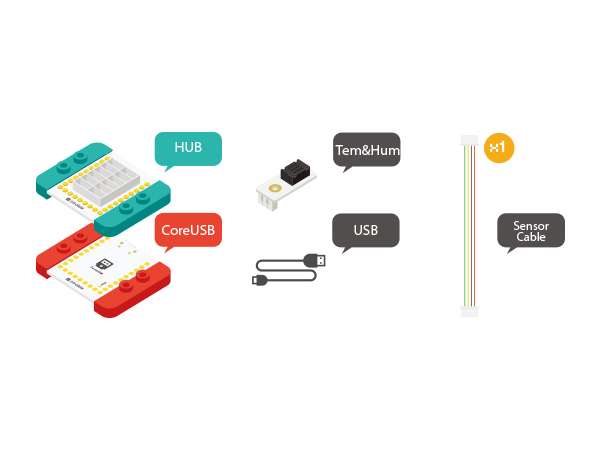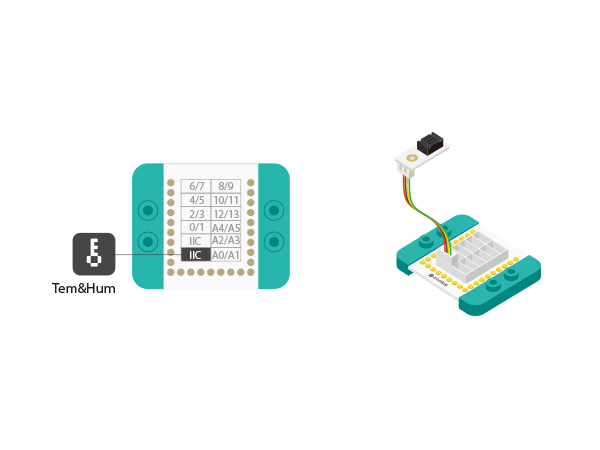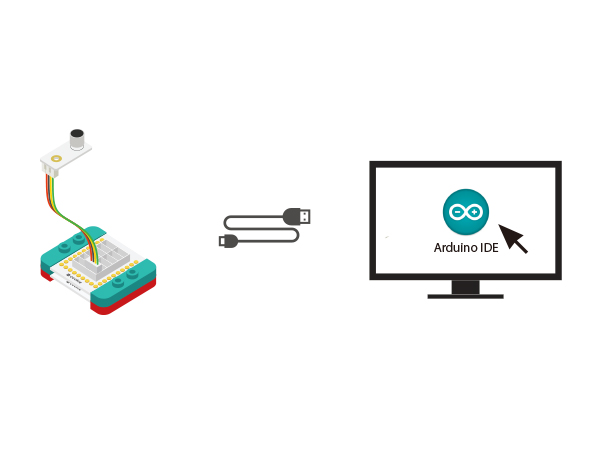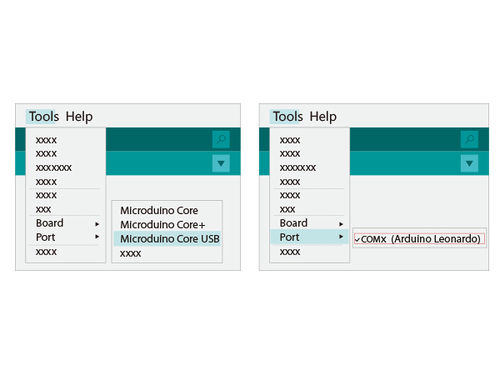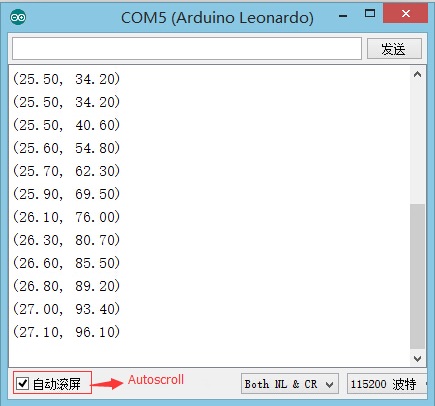Difference between revisions of "Temperature & Humidity Sensor"
From Microduino Wiki
(Changed Specifications) |
|||
| (3 intermediate revisions by one other user not shown) | |||
| Line 6: | Line 6: | ||
==Specification== | ==Specification== | ||
*Electrical Specifications | *Electrical Specifications | ||
| − | **Operation Voltage: 2.6~ | + | **Operation Voltage: 2.6~5V; |
**Output: Data over I2C bus protocol | **Output: Data over I2C bus protocol | ||
*Technical Specifications | *Technical Specifications | ||
| Line 17: | Line 17: | ||
** Connector Interface: 4 Pin, 1.27mm-pitch | ** Connector Interface: 4 Pin, 1.27mm-pitch | ||
*Communication Protocol | *Communication Protocol | ||
| − | **Interface: | + | **Interface: I2C |
**Pins: SDA (data), SCL (clock), VCC (power) and GND (ground) | **Pins: SDA (data), SCL (clock), VCC (power) and GND (ground) | ||
| Line 37: | Line 37: | ||
[[File:Temp-Hum.jpg|600px|center]] | [[File:Temp-Hum.jpg|600px|center]] | ||
===Preparation=== | ===Preparation=== | ||
| − | *Setup | + | *Setup 1: Connect Microduino-Temp&Hum to the IIC port of the Hub. |
[[file:mCookie-Temp&Hum-sensor.JPG|600px|center]] | [[file:mCookie-Temp&Hum-sensor.JPG|600px|center]] | ||
| − | *Setup | + | *Setup 2: Stack the CoreUSB, Hub and Sound together and then connect them to the computer with a USB cable. |
[[file:mCookie-Sound-pc.JPG|600px|center]] | [[file:mCookie-Sound-pc.JPG|600px|center]] | ||
===Experiment: Detect Temp&Hum Values === | ===Experiment: Detect Temp&Hum Values === | ||
| − | *Open Arduino IDE and copy the following code into IDE | + | *Open the Arduino IDE and copy the following code into IDE, or select from the examples built into the IDE: |
| + | File->Examples->_07_Sensor_Temp_Hum_AM2321->'read_simple' | ||
<source lang="cpp"> | <source lang="cpp"> | ||
#include <Wire.h> | #include <Wire.h> | ||
| Line 76: | Line 77: | ||
===Program Debugging === | ===Program Debugging === | ||
*The program uses AM2321 temperature and humidity collection library and defines "#include <Wire.h>" and "#include <AM2321.h>" as driving files. | *The program uses AM2321 temperature and humidity collection library and defines "#include <Wire.h>" and "#include <AM2321.h>" as driving files. | ||
| + | *The program uses two important libraries to communicate with the sensor. For any project/software that uses this sensor, the following libraries must be included: | ||
| + | **For the AM2321 sensor: "#include <AM2321.h>" | ||
| + | **For I2C Communication: "#include <Wire.h>" | ||
*“am2321.temperature/10.0”represents the calculated temperature value and " am2321.humidity/10.0" represents the calculated humidity value. | *“am2321.temperature/10.0”represents the calculated temperature value and " am2321.humidity/10.0" represents the calculated humidity value. | ||
==Application== | ==Application== | ||
| − | + | The Microduino Temperature and Humidity sensor can be used in a range of applications including HVAC systems, dehumidifiers, home automation, data recording or in a weather station. | |
==Video== | ==Video== | ||
|} | |} | ||
Latest revision as of 06:40, 30 September 2016
Contents[hide]OutlineThis mCookie sensor uses an AM2321 chip and the standard mCookie connector to give you the ability to quickly add high precision temperature measuring and humidity sensing to any Microduino project. The sensor has an on-board microprocessor delivering rapid response, high noise tolerance and excellent data quality. Specification
DevelopmentEquipment
Preparation
Experiment: Detect Temp&Hum Values
File->Examples->_07_Sensor_Temp_Hum_AM2321->'read_simple' #include <Wire.h>
#include <AM2321.h>
void setup() {
Serial.begin(9600);
}
void loop() {
readByAM2321();
delay(500);
}
void readByAM2321()
{
AM2321 am2321;
am2321.read();
Serial.print("(");
Serial.print(am2321.temperature/10.0);
Serial.print(", ");
Serial.print(am2321.humidity/10.0);
Serial.println(')');
}
Program Debugging
ApplicationThe Microduino Temperature and Humidity sensor can be used in a range of applications including HVAC systems, dehumidifiers, home automation, data recording or in a weather station. Video |
